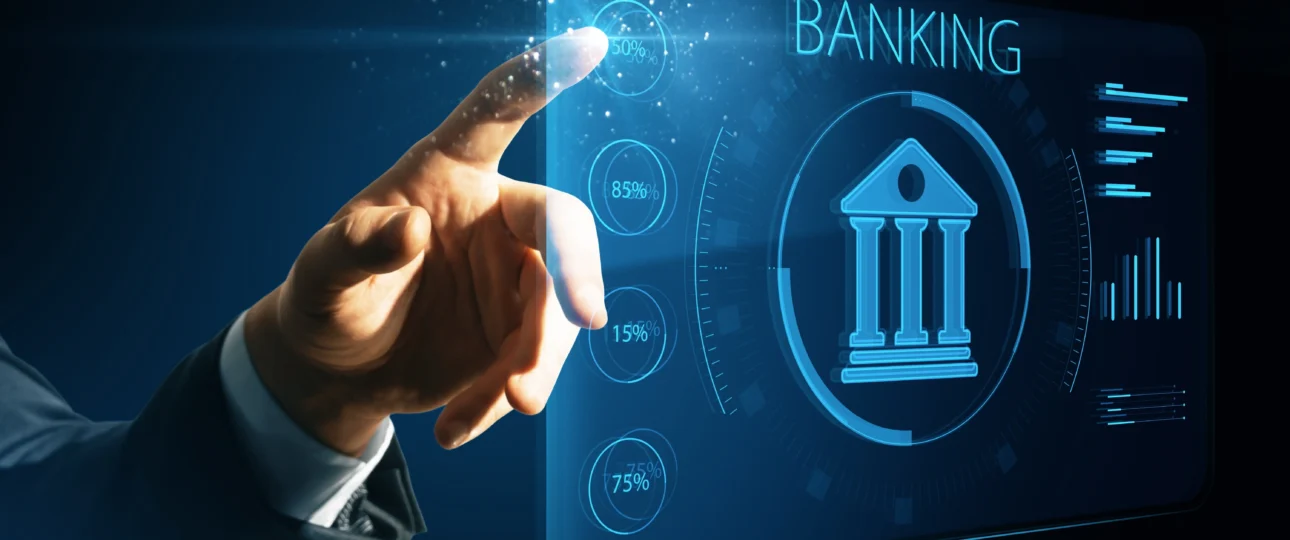The banking industry has undergone a significant transformation over the past few decades, driven largely by advancements in technology, changing consumer expectations, and evolving financial needs. Today, digital banking, mobile payment systems, and fintech innovations are reshaping the way we interact with our money. In this guide, we’ll explore the evolution of banking, how technology has changed the landscape, and what the future holds for the industry.
1. The Shift to Digital and Mobile Banking
As technology continues to evolve, traditional banking is moving toward more digital-first solutions. Mobile banking and online banking have become the preferred methods for managing finances, offering a range of services like:
- Account Management: Checking balances, making transfers, and managing multiple accounts directly from smartphones or computers.
- Bill Payments: Paying bills and setting up automated payments to avoid late fees and streamline finances.
- Loan Applications: Applying for personal loans, auto loans, and even mortgages through banking apps, which offer faster processing times and easier documentation submissions.
2. Understanding Online vs. Traditional Banking
While traditional banking continues to serve many customers through physical branches, online-only banks and neobanks are gaining popularity. Online banks often provide the same services as traditional banks but without the overhead costs of operating physical branches. This results in lower fees and better customer experiences.
Key Differences:
- Traditional Banks: Provide full-service banking, including in-person services such as face-to-face consultations and access to physical ATMs.
- Neobanks: Operate exclusively online, often offering competitive interest rates and fewer fees, but without physical branch access.
3. Fintech: The Game-Changer in Banking
The rise of fintech has been a game-changer in the banking sector. Financial technology companies are creating new and innovative solutions to improve how consumers and businesses manage money. These include:
- Peer-to-Peer Lending: Platforms like LendingClub and Prosper have disrupted traditional lending by allowing individuals to lend and borrow money directly, bypassing banks altogether.
- Cryptocurrency: With the rise of digital currencies like Bitcoin and Ethereum, some banks have begun to integrate blockchain technology to secure transactions and introduce cryptocurrency services.
- Digital Wallets: Services such as Apple Pay, Google Pay, and Samsung Pay enable customers to store and use their credit or debit card information on their phones, allowing for faster, secure transactions in-store and online.
4. Banking Services Available in 2025
In 2025, banking has expanded beyond the traditional services of savings and checking accounts. Modern banks offer an array of products and services designed to meet a variety of financial needs:
- Credit and Debit Cards: Credit cards allow users to borrow funds up to a preset limit, while debit cards draw directly from a linked bank account for transactions.
- Investment Products: Many banks now offer a variety of investment products, such as mutual funds, stocks, and retirement savings plans, through their platforms, enabling users to manage investments from their bank accounts.
- Insurance: Some banks have begun to offer insurance products, such as life insurance, auto insurance, and homeowners insurance, providing a one-stop-shop for personal financial management.
5. Banking Security: Safeguarding Customer Data
As banking becomes increasingly digital, ensuring security and protecting personal data is more critical than ever. Modern banks employ sophisticated security measures, such as:
- Two-Factor Authentication (2FA): This provides an added layer of security when accessing accounts or authorizing transactions.
- Biometric Identification: Using fingerprint scans, facial recognition, and voice recognition to secure accounts and prevent unauthorized access.
- End-to-End Encryption: Protecting sensitive customer data by encrypting information during transactions to prevent it from being intercepted by hackers.
6. Customer Experience and Support in Banking
In today’s fast-paced world, customer experience is a top priority for banks. Whether through chatbots, AI-powered customer support, or 24/7 availability of services, banks are working hard to provide seamless and accessible customer service. Features like real-time transaction alerts, personalized banking experiences, and financial advice tools are becoming the standard.
- Virtual Assistants: Many banks now feature AI-powered chatbots and assistants that can help customers with everything from checking account balances to understanding complex financial products.
- Mobile Banking Apps: User-friendly apps make banking accessible anytime, anywhere, making it easy for customers to manage their finances on the go.
7. The Rise of Digital and Contactless Payments
Digital payments are becoming the dominant method for making transactions. Services like PayPal, Venmo, and Zelle allow customers to send and receive money instantly using their mobile phones. Contactless payments (such as tap-to-pay options with credit or debit cards) are also growing in popularity for their convenience and speed.
With the rise of mobile wallets, users can store multiple credit and debit cards, along with loyalty cards and gift cards, all within their smartphone. This shift is leading to a cashless society, where physical currency becomes less common.
8. Future Trends in Banking
As we look toward the future, several key trends are expected to shape the evolution of banking:
- AI and Automation: Artificial intelligence will continue to transform banking services, from fraud detection to customer service. Automation will streamline operations and reduce the time required to process transactions and loans.
- Blockchain: The integration of blockchain technology will likely become more widespread, enabling faster and more secure transactions. Some banks are exploring blockchain to increase transparency and reduce the risk of fraud.
- Open Banking: Open banking initiatives, which allow third-party developers to create applications and services that interact with bank data, will continue to revolutionize financial services. This could result in more personalized financial products and better services for consumers.
- Sustainability: As customers become more aware of environmental issues, banks may offer green banking solutions, including environmentally friendly investment opportunities and financing for sustainable projects.
Conclusion
The banking sector has come a long way in the last few decades, and its future is increasingly intertwined with advancements in technology. From digital banking and mobile payments to blockchain and fintech innovations, the banking landscape is rapidly evolving. In 2025 and beyond, customers will continue to benefit from convenient, secure, and personalized banking services that make managing their finances easier than ever before.
Understanding how these changes impact you and staying informed about the latest trends will help you make the most of modern banking services. Whether you’re using mobile apps, AI-powered tools, or taking advantage of digital wallets, banking is more accessible, efficient, and secure than ever before.




